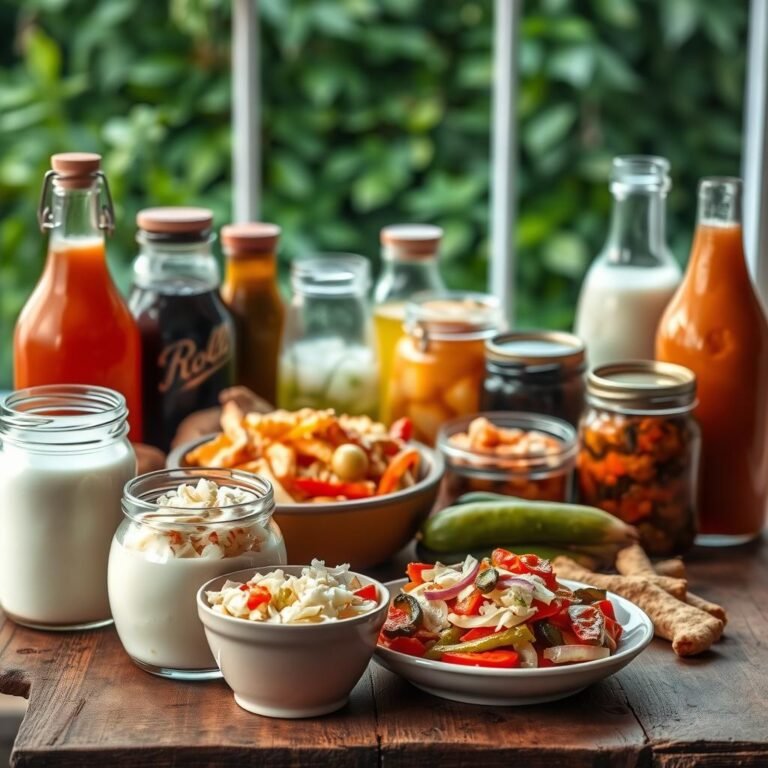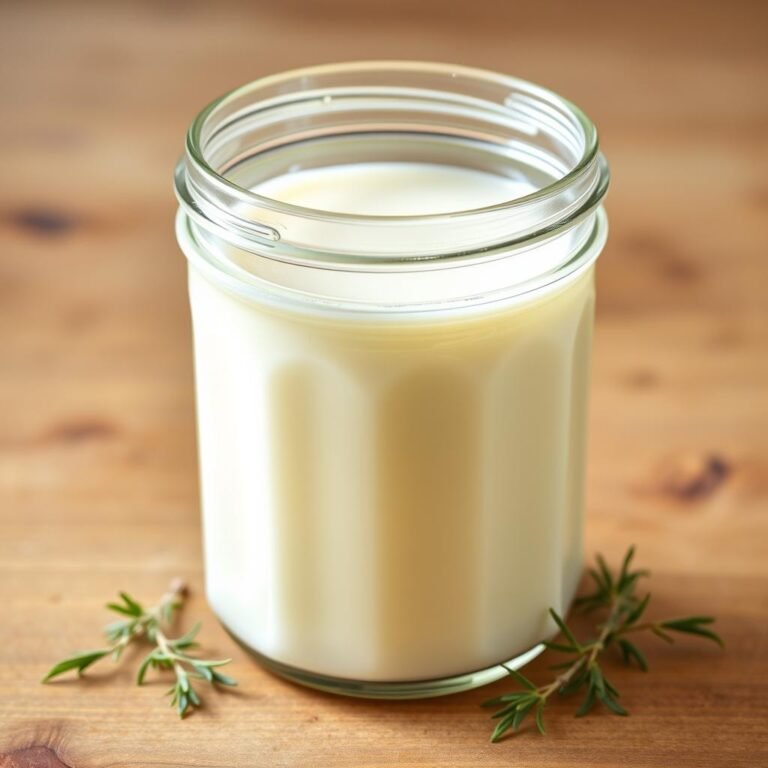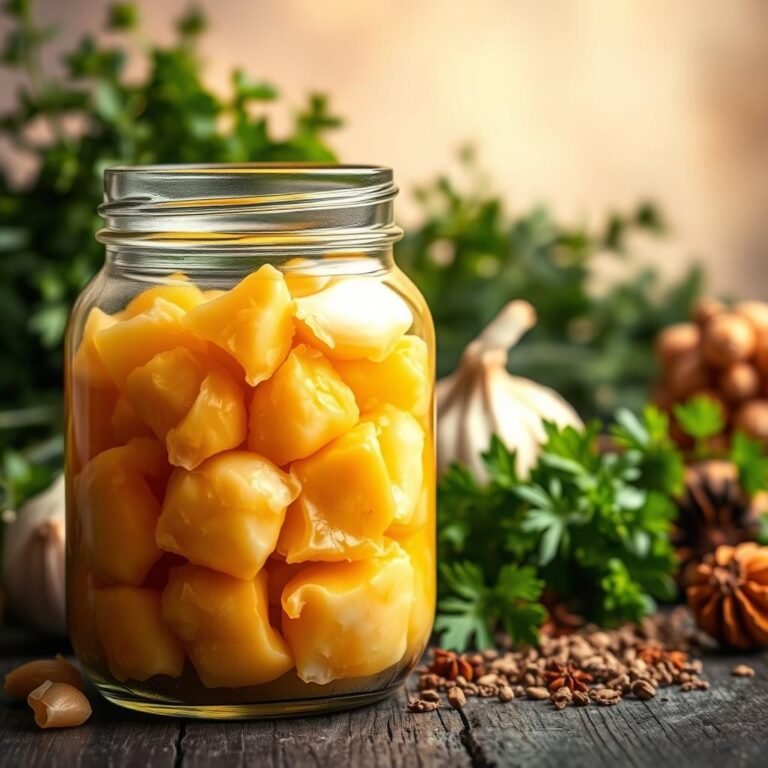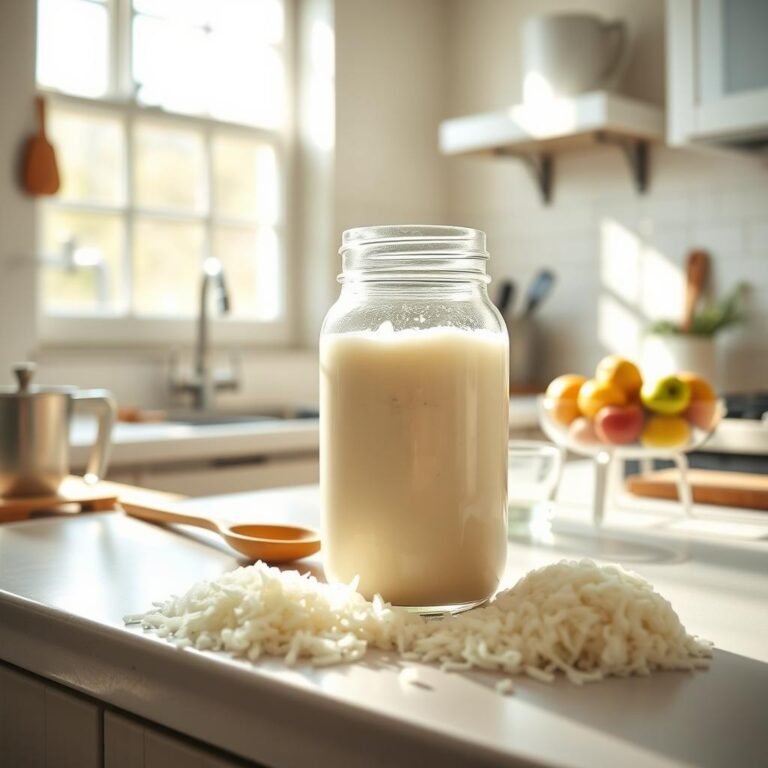A Proper List of Good Bacteria Foods You Can Find Easily
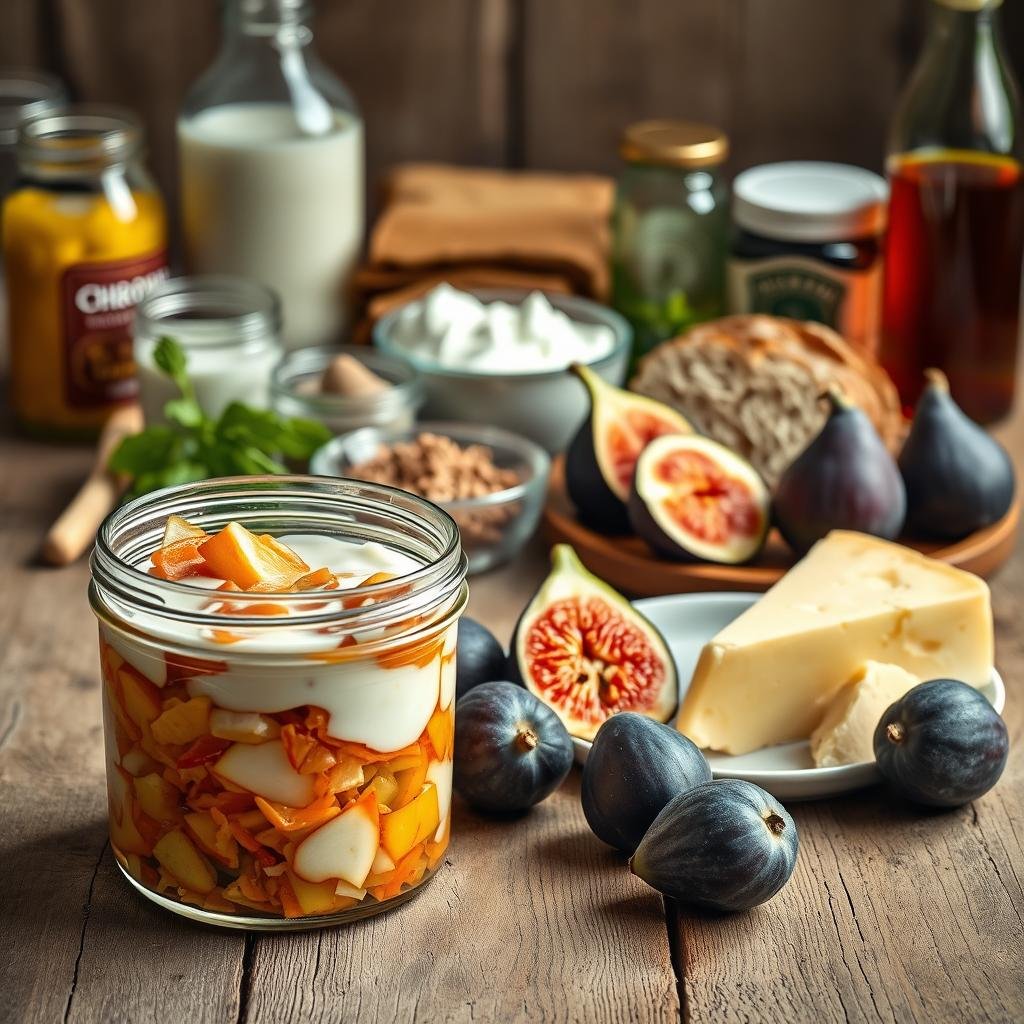
Welcome to our guide on good bacteria foods. These probiotic-rich foods are easy to find and key to a healthy gut bacteria diet. Adding them to your diet can improve your immunity and digestion. It also helps keep your gut balanced.
Our list has the best and easiest-to-find foods for your gut health. They are here to help you stay healthy.
What Are Good Bacteria Foods?
Good bacteria foods, also known as probiotics, are key for a healthy gut. They are full of beneficial bacteria that help with digestion and boost the immune system. Eating fermented foods can make you feel better by balancing your gut’s bacteria.
Definition and Benefits
Fermented foods are packed with live microorganisms that are good for you. They help keep your gut bacteria in balance. Eating them regularly can improve digestion and help your body absorb nutrients better. They also strengthen your immune system and may lower the chance of stomach problems and inflammation.
Common Sources
There are many easy-to-find foods that are good for your gut. Here are some:
- Yogurt
- Kefir
- Sauerkraut
- Kimchi
- Pickles (with live active cultures)
- Miso
- Tamari
- Tempeh
- Kombucha
- Sour cream
- Cottage cheese
- Aged cheese
- Buttermilk
- Acidophilus milk
For more info on these foods and their benefits, check out this useful resource.
Yogurt: A Top Source of Probiotics
Yogurt is a special dairy product made by adding probiotic bacteria to milk. This makes it taste better and adds more probiotics. So, yogurt is great for keeping your gut healthy and boosting your immune system.
Types of Yogurt
There are many kinds of yogurt, each with its own benefits:
- Greek Yogurt: It’s thick and creamy, full of protein and probiotics. Great for those who want more protein and a healthy gut.
- Traditional Yogurt: It’s not as thick but is just as good for your gut. It’s easy to find and popular.
- Non-Dairy Alternatives: Made from almond, soy, or coconut milk, these yogurts are good for those who can’t have regular milk.
Health Benefits
Eating yogurt every day can make you healthier in many ways:
- Improved Bone Health: Yogurt has lots of calcium and vitamin D. These are key for strong bones and teeth.
- Better Cardiovascular Health: Yogurt’s probiotics can lower inflammation and keep cholesterol levels healthy. This is good for your heart.
- Reduced Risk of Diabetes: Eating yogurt often might help prevent type 2 diabetes. It helps control blood sugar.
- Support for Lactose Intolerance: Yogurt’s probiotics help digest lactose. This makes it easier for people with lactose intolerance to eat dairy.
Yogurt is a key food for a balanced diet. It has many forms and lots of health benefits. It’s a must-have for a healthy gut and immune system.
Kefir: Fermented Milk Drink for Gut Health
Kefir is a top probiotic-rich food today. It comes from Eastern Europe and is known for its health benefits. It’s made by adding kefir grains to milk, creating a drink full of nutrients for your gut.
What is Kefir?
Kefir is made by fermenting milk with kefir grains. It has up to 61 strains of bacteria and yeasts. This drink is fizzy and tangy, making it great for your diet.
Health Benefits of Kefir
This drink is packed with nutrients. A one-cup serving of low-fat kefir has:
| Nutrient | Amount | Daily Value (DV) |
|---|---|---|
| Protein | 9 grams | – |
| Calcium | – | 36% |
| Phosphorus | – | 20% |
| Vitamin B12 | – | 29% |
| Riboflavin (B2) | – | 25% |
| Magnesium | – | 7% |
| Vitamin D | – | 12% |
| Calories | 104 | – |
| Carbs | 11.6 grams | – |
| Fat | 2–3 grams | – |
Kefir is easy to digest and has less lactose than regular milk. This makes it good for those who can’t digest lactose well. It also has probiotics that help fight infections and boost your immune system. Learn more about kefir’s health benefits here: comprehensive guide.
Adding kefir to your diet improves your gut health. It helps with digestion, eases irritable bowel syndrome, and boosts overall wellness. This is why it’s a top fermented food for gut health.
Sauerkraut: Fermented Cabbage for a Healthy Gut
Eating sauerkraut is good for your gut. It’s made from cabbage that’s been fermented. This makes it sour and full of nutrients.
How Sauerkraut is Made
Sauerkraut starts with shredded cabbage and salt. The bacteria on the cabbage start the fermentation. This makes lactic acid, which preserves the cabbage and adds flavor.
Nutritional Profile
Sauerkraut is full of fiber, vitamins, and minerals. It’s great for your gut health. The fermentation process makes it even better, adding to its nutritional value.
For more on sauerkraut’s health benefits, check out this resource.
Even store-bought sauerkraut is good for your gut. The fermentation process is key. It makes sauerkraut a great source of probiotics.
Tempeh: Fermented Soy Protein
Tempeh is a traditional Indonesian dish made from fermented soybeans. It has a firm texture and a nutty flavor. It’s a great meat substitute because of its high protein.
The making of tempeh involves good bacteria like mold and lactic acid bacteria. These help make tempeh good for your gut. It has Lactobacillus fermentum and Lactobacillus delbrueckii that help with digestion.
Tempeh is also full of vitamin B12, which is hard to find in plant-based foods. This is thanks to Klebsiella pneumoniae and Citrobacter freundii during fermentation. Eating tempeh helps you get more nutrients.
Tempeh is also packed with antioxidants, which fight off stress. It has amino acids that help muscles grow and recover. It also has L-arginine, which is good for blood fat levels.
Tempeh is important for your immune system. It has antioxidants, anti-inflammatory, and antiproliferative properties. To learn more, check out this study.
| Nutrient | Benefit |
|---|---|
| Protein | Supports muscle growth and repair |
| Vitamin B12 | Enhances nutrient absorption |
| Probiotics (LAB) | Improves digestive health |
| Antioxidants | Reduces oxidative stress |
| L-arginine | Improves blood fat levels |
Kimchi: Spicy Probiotic-Rich Food
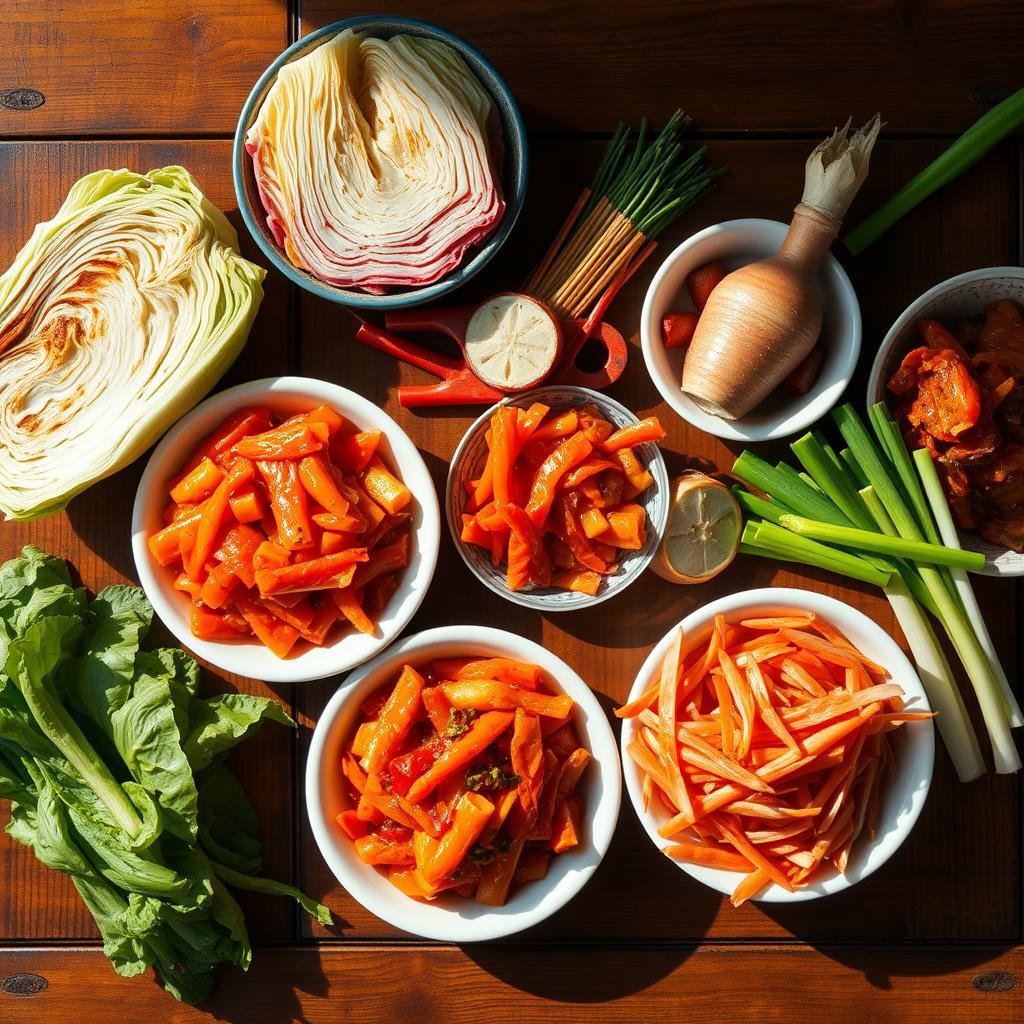
Kimchi is a traditional Korean dish known for its bold flavors and health benefits. It’s spicy and fermented, full of nutrients. It’s a great source of probiotics, helping your gut health.
Main Ingredients in Kimchi
The main ingredient in kimchi is Napa cabbage. Radishes, garlic, ginger, and chili pepper are also used. The seasoning includes salt, sugar, and spices. These give kimchi its taste and help it ferment.
Health Benefits of Kimchi
Kimchi is good for your health. It helps with digestion because of its lactobacillus bacteria. It’s also full of vitamins like K, A, and riboflavin.
Eating kimchi can boost your immune system. It supports your gut health. This makes it a great choice for your diet.
| Nutrient | Benefit |
|---|---|
| Vitamin K | Supports bone health and blood clotting |
| Lactobacillus | Improves digestion and gut flora balance |
| Vitamin A | Enhances immune function and vision health |
| Riboflavin | Contributes to energy production and cellular function |
Miso: Traditional Japanese Fermented Paste
Miso is a key part of Japanese food. It’s made from fermented soybeans, sometimes with rice or barley. Known for its deep umami taste, miso is used in many dishes, like miso soup.
Miso is also good for your health. It’s full of beneficial bacteria, which helps your gut. This is why it’s great for your digestive system.
Eating miso regularly can also help prevent some cancers and lower blood pressure. It’s packed with antioxidants. These help protect your body from harm.
Kombucha: Fermented Tea with Probiotics

Kombucha is a fizzy, tangy drink made from tea, sugar, and a special mix of bacteria and yeast. It comes from Asia and is loved worldwide for its health benefits. People drink it for its unique taste and to help their gut health.
History and Popularity of Kombucha
Kombucha has been around for over 2,000 years, starting in China. It then spread to Russia and Eastern Europe. Now, it’s popular in the US and everywhere else for its health benefits.
Health Benefits of Kombucha
Drinking kombucha often has many health perks. It’s full of probiotics that help your gut. It also has antioxidants that fight off bad stuff in your body.
It might even help your liver and make your immune system stronger. This makes kombucha a great choice for anyone looking to stay healthy.
Pickles: Fermented Cucumbers for Gut Health
Pickles are made by soaking cucumbers in salty water. This lets them ferment naturally. They become rich in probiotics, which help your gut health.
Pickles are low in calories, making them great for any meal. They are also full of vitamin K. Vitamin K helps with blood clotting and keeps bones strong.
Choose pickles without vinegar to get the most probiotics. Vinegar-based pickles miss out on the fermenting process. This is key for getting good bacteria for your gut.
Even though pickles are good for you, they have a lot of sodium. This might be a problem for those watching their sodium. Yet, adding pickles to a diet rich in fermented foods can really help your health.
Traditional Buttermilk: “Grandma’s Probiotic”
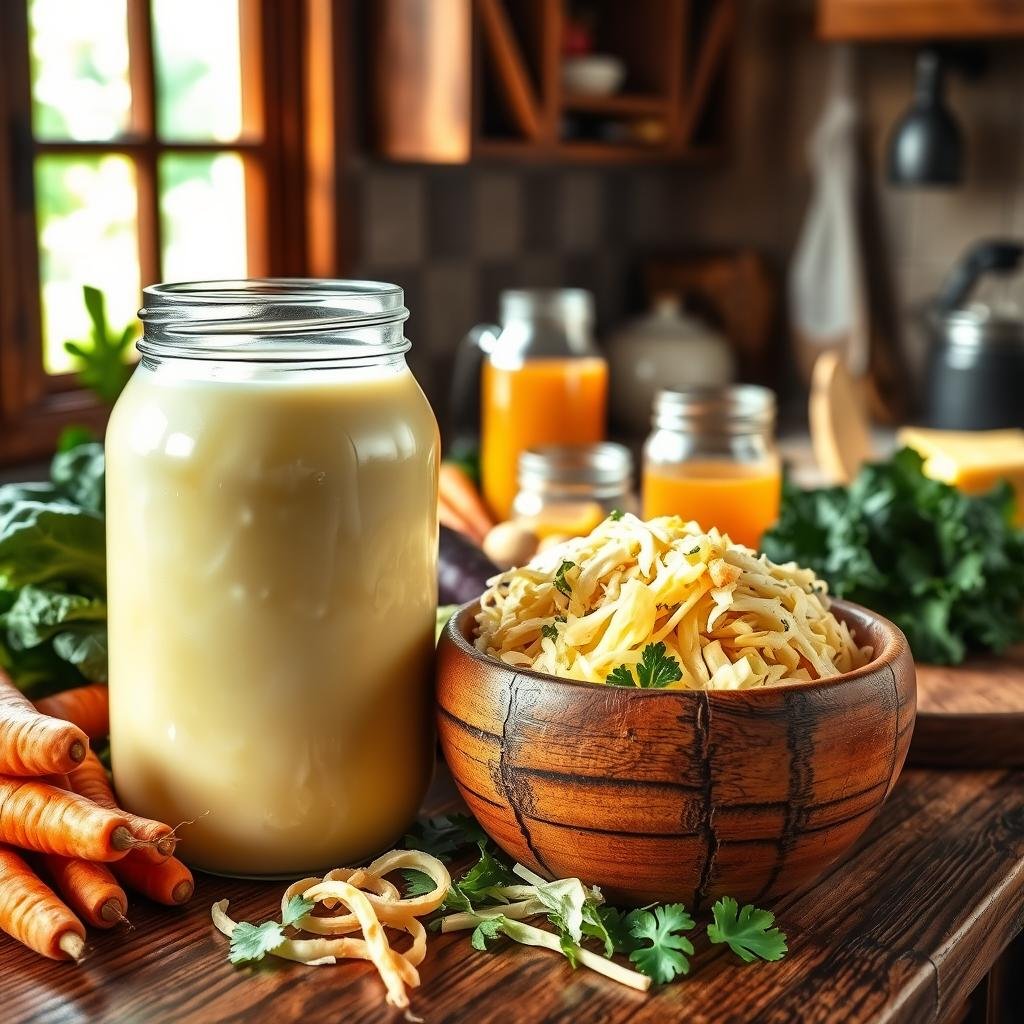
Traditional buttermilk is known as “Grandma’s Probiotic.” It’s great for your diet, full of prebiotics. Unlike the buttermilk in the US, this kind comes from churning butter. It’s full of natural probiotics, making it a top probiotic food.
Difference Between Traditional and Cultured Buttermilk
Traditional buttermilk comes from making homemade butter. It naturally has probiotics. But cultured buttermilk is made by adding bacteria to milk. It doesn’t have the natural probiotics of traditional buttermilk.
This shows why traditional buttermilk is better for your gut. For more on fermented dairy, check out this link.
Nutritional Benefits of Traditional Buttermilk
Traditional buttermilk is more than probiotics. It’s low in fat and calories but full of vitamins like B12 and riboflavin. It also has calcium and phosphorus, key for health and digestion.
Natto: Nutrient-Dense Fermented Soybeans
Natto is a traditional Japanese food that’s packed with health benefits. It’s made from soybeans fermented with Bacillus subtilis. This dish is great for a beneficial bacteria diet and overall health.
Natto is full of protein, making it perfect for vegetarians and vegans. It also has lots of vitamin K2, which is good for bones and heart health. Eating natto regularly can help keep bones strong and lower heart disease risk.
Natto is also rich in probiotics, which are good for the gut. These beneficial bacteria help with digestion and boost immunity. So, it’s a great choice for anyone looking to improve their gut health.
Natto tastes strong and has a sticky, stringy texture. It may be different at first, but it’s a big part of Japanese culture. People often eat it for breakfast.
If you want to add more nutrients to your diet, try natto. It’s a tasty way to support a beneficial bacteria diet. Eating natto can help you feel better and more energetic.
Good Bacteria Foods You Can Find Easily
Adding gut-friendly foods to your diet can boost your health. Yogurt and sauerkraut are full of good bacteria. They are easy to find and taste great.
Yogurt comes in many flavors. Pick brands with live cultures for the most benefits. This way, you get the good bacteria you need.
Kefir is a fermented milk drink that’s full of probiotics. It tastes tangy and is very nutritious. It’s great for your gut health.
Fermented foods like kimchi and miso also help. They add flavor and good bacteria to your meals. You can find them in most stores.
Eating these foods can improve digestion and boost your immune system. Don’t forget about pickles and buttermilk. They are full of good bacteria too.
By adding these foods to your diet, you can feel better. A healthy gut is key to feeling your best.

